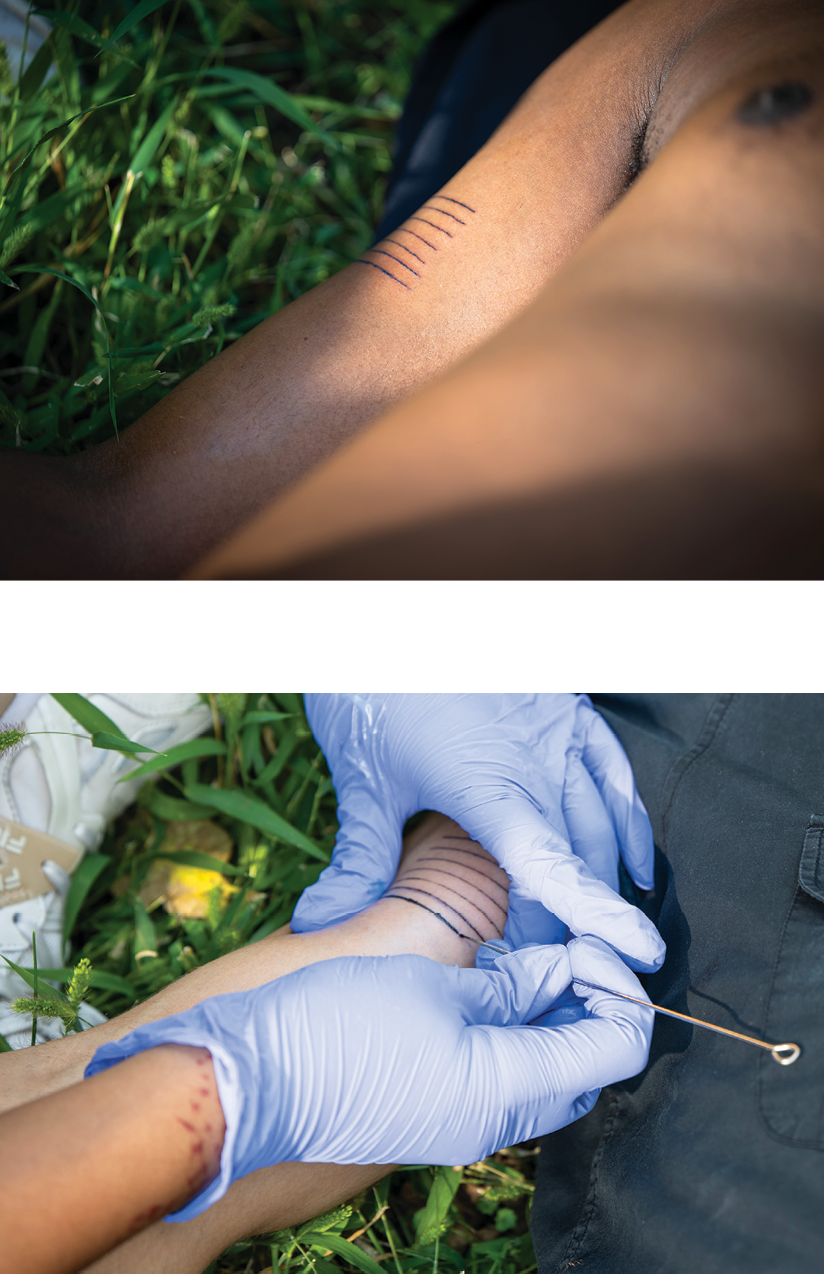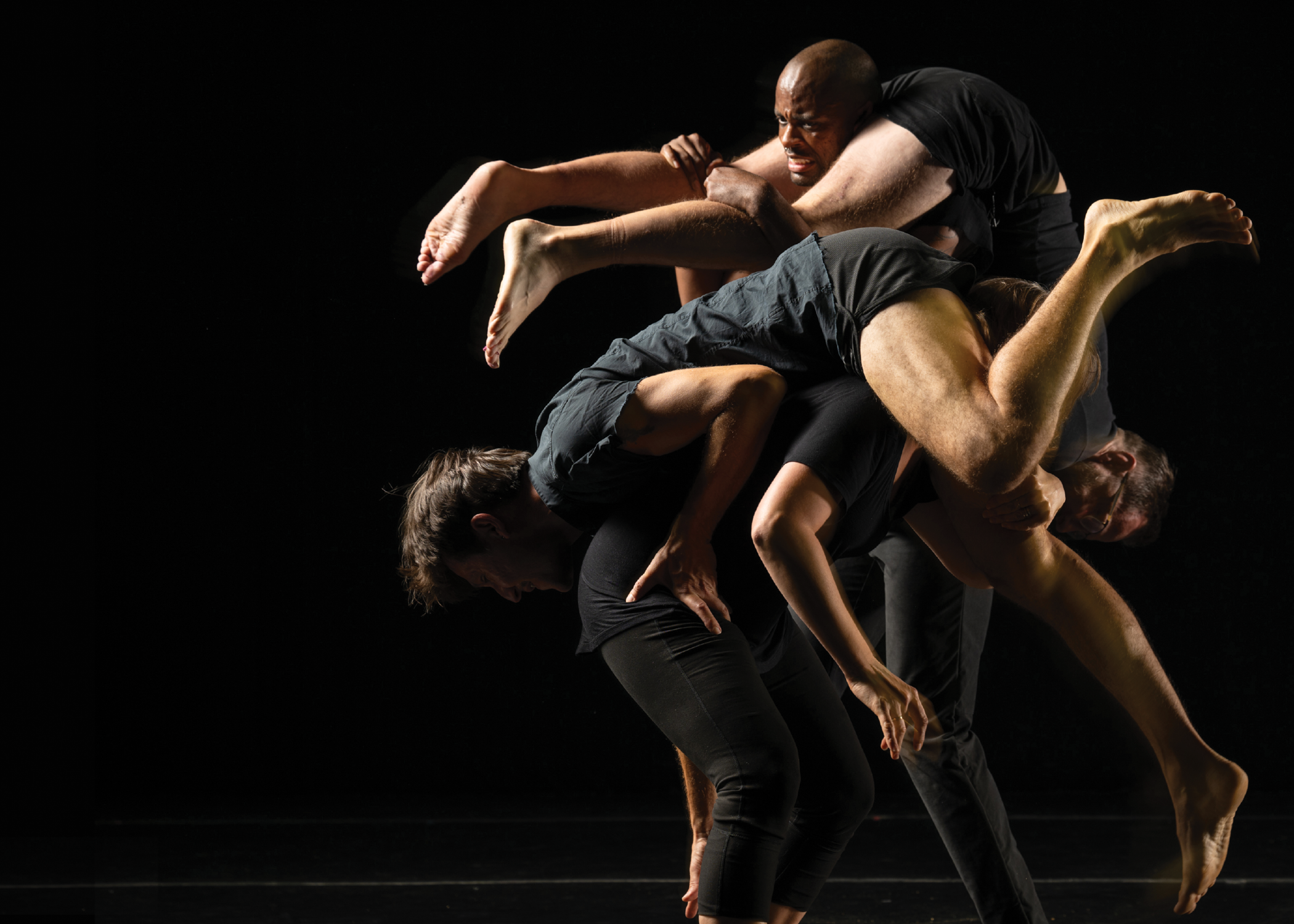THE ASSIGNMENT:
Pageantry & Performance
Many areas of the world are known for sporting events that showcase regional culture while also highlighting the agility and skill of local athletes. These sports are sometimes part of larger cultural festivals or rituals and are often surrounded by other celebrations. Examples range from the violent, chaotic Calcio Storico of Florence to the non-violent modern Tahteeb stick fighting of Egypt to the Makepung Buffalo Races of Bali. These all share elements of tradition, spectacle, and a festival-like environment.
Using one culturally or regionally specific sport as a launching point, explore the intersections of sport, pageantry and performance.
Tony Orrico & Christopher-Rasheem McMillan
HOMEFIELD ADVANTAGE /
QUEERING THE RETURN
Queerness is forever on the horizon.
Queerness is not yet here. We are not yet queer.
We may never touch queerness, but we can see it on the horizon.*
And in the almost, this, too, is Friendship…
This work started many years ago. I met Tony Orrico in 2016. We became fast friends, the closest even, and in 2020 there was a rupture of breaking and collapsing. I won't bore you with all the details of the conversations except to say we are both in love and not yet. Almost. Homefield Advantage, our code name for the collaboration, is first and foremost a container for finding what we mishandled or overplayed in each other, and how to risk intimacy and desire in our way again. How to compete again and play and play make-believe seems to be at the heart of what we might call sports, or what I might call performance, which is at its core a desire to be witnessed and watched, to be against and in concert with, to be utterly used and to use. We both be queer, yet queerness is not something we fully possess or embody. Instead, it remains on the horizon, a possibility, a potentiality that we never fully reach. It may be too much hope to put on artwork, a process that fixes what's been broken. Perhaps that's what artwork is: a fix, but not in some utopian sense of the word “fix”, but to attach and assemble, to be with the broken and the impossibility, the ugly non-return.
We took our cue from sports practiced all over the globe, distilling from our perspective and positionality, drawing on what's at stake for the communities practicing these forms and what's at stake for both of us. We put our bodies on the line to make visible pageantry, performance, and sport distilled through desire, for the impulse to conquer and to caress are the same. Each sport we consulted raises questions that beg us to dialogue with – but not devour, or frame the sport's aim out of context – how to be ourselves, mediated through/by effort and play. There was tattooing, of course, but we had both been marked and scarred long before the new ink was welded into our skin. We have been in and out of love and exposed to false starts long before.
His pain is too much to bear now and then. The task of friendship, like sport, like love, is to push past the known capacity of the body, well past its limits into the unknown, past what is human. Throughout the process, we question the personal stake for each of us. We take the invitation to put the body on the line not as a metaphor but as a compromised return to each other. Knowing that we could never go backwards, us as we were, but forward as something altogether different.
This project is contractually binding, somewhere between fantasy and cosplay, orientated towards admiration, fear, and adornment. Queerness, like sports, is not just about conquering but about pushing ourselves beyond here into the almost again.
*Adapted from José Esteban Muñoz, Cruising Utopia: The Then and There of Queer Futurity (New York: New York University Press, 2009), 1.



